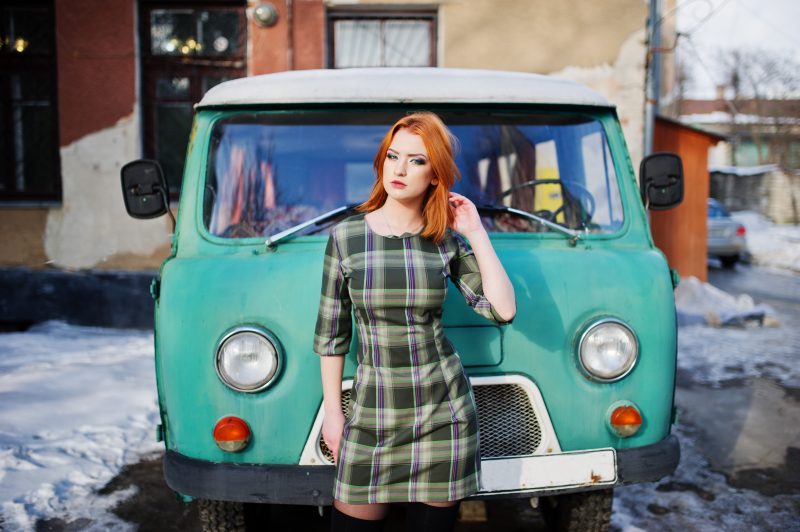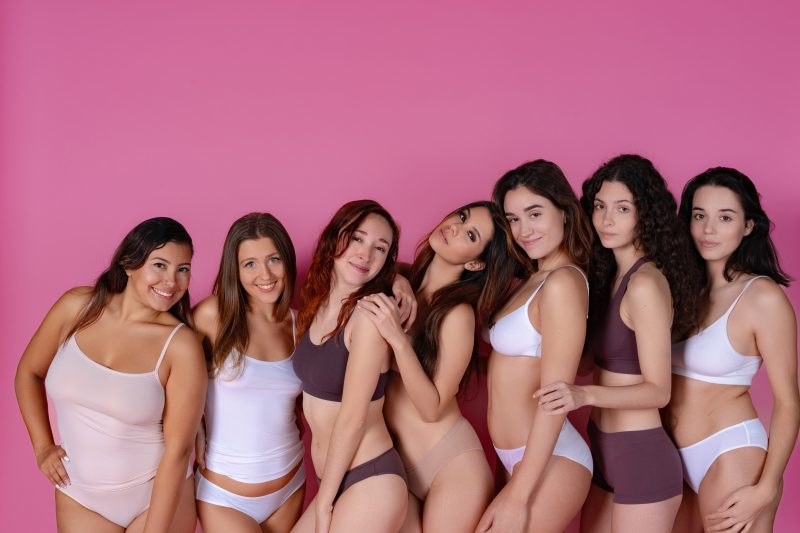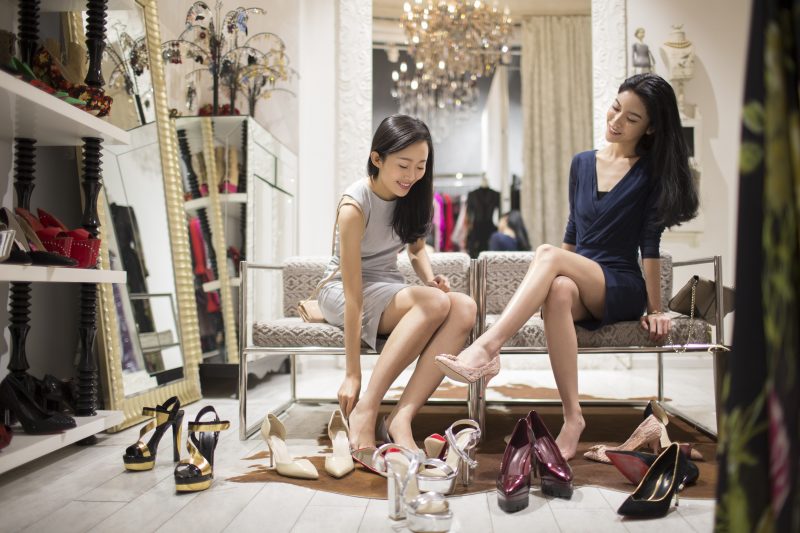It happened last Tuesday morning outside my niece’s primary school in south London. I was doing auntie duty, dropping off seven-year-old Lily while my sister attended an early work meeting. There I was, standing awkwardly among the parental throng, when I noticed something odd: at least eight women within my immediate sightline were wearing variations of the exact same outfit. Breton stripe top, straight-leg jeans or chinos in a sensible neutral, quilted gilet or waxed jacket, and either white trainers or ankle boots depending on the weather forecast. It was like witnessing a flash mob, but for middle-class motherhood.
“Is this some kind of uniform I don’t know about?” I whispered to my niece, who rolled her eyes with the magnificent disdain only a seven-year-old can muster.
“That’s just what mummies wear,” she replied, before spotting her friend and dashing off without a backward glance, leaving me standing alone in my decidedly non-school-run appropriate outfit of vintage Levi’s and an oversized men’s shirt that probably raised questions about my suitability as a temporary guardian.

Later that day, I called my sister to report on the successful drop-off and to inquire about what I’d witnessed.
“Oh God, the Boden Army,” she laughed. “It’s not just Boden, though that’s the flagship. It’s the whole middle-class mummy uniform thing. Once you notice, you can’t unsee it.”
My sister, I should note, is a university lecturer with a fondness for Margaret Howell shirts and Japanese workwear who treats the school run as resistance territory against what she calls “the beige conformity brigade.” But even she admitted to occasionally being tempted by the siren call of Practical Yet Presentable clothing that characterizes the quintessential school-run aesthetic.
“It makes sense, in theory,” she sighed. “You need clothes that can handle multiple spills, sudden weather changes, impromptu playground duty, and still look decent enough for when you bump into your boss or that mum who’s always immaculately dressed despite having four children under ten. But does it all have to look so… samey?”
This conversation triggered a professional curiosity. As someone who writes about fashion for a living, I’m fascinated by these pockets of style that develop in specific contexts and for specific needs. The school-run uniform—which has evolved into such a recognizable look that it’s almost a style shorthand in British culture—serves genuine practical purposes but has also become something of a class signifier, a way of telegraphing a certain kind of aspirational middle-class family life.

But surely there are alternatives? British brands that offer the same practicality, quality, and understated polish but with a bit more individuality? Options for parents who want clothes that can survive the rigors of family life without surrendering completely to the Breton-and-gilet hegemony?
This became my mission: to find British brands that serve the needs of the school-run set—practicality, durability, a certain put-together quality—without defaulting to what has become a somewhat tired uniform. Brands that might cost a bit more than the high street but justify their prices through quality, ethical production, and longevity. The kind of clothes that might actually get excited reactions from other parents rather than just unconscious nods of tribal recognition.
My first discovery came via my friend Leila, who has twin eight-year-olds and somehow always manages to look like she’s just walked off the set of a particularly stylish independent film—comfortable and practical but with an artistic edge that elevates her from the standard school-gate lineup.
“Community Clothing,” she told me when I asked about her consistently excellent jacket collection. “Patrick Grant’s brand. Everything’s made in the UK, the quality is incredible, and the designs are simple but not boring. Like if basic workwear had a glow-up.”
Community Clothing was founded with the specific mission of creating quality, affordable clothes while creating jobs in the UK textile industry. Their pieces have that perfect balance of practicality and style—the kind of clothes that look better with age and wear rather than falling apart after a few washes. Their chore jackets (around £120) come in interesting colors beyond the usual navy and khaki, and their knitwear (£79-£119) is made from Scottish lambswool that’s substantially warmer and more durable than the mass-produced alternatives.

What’s particularly appealing about Community Clothing for the school-run context is that their pieces are genuinely functional without screaming “I’ve given up.” The cotton twill work jackets have proper pockets (a rarity in women’s clothing), the sweaters are thick enough to function as light outerwear in milder weather, and everything is designed to be layered efficiently when the temperature drops unexpectedly—a crucial consideration when you’re standing in a playground at 8:45am in late October.
Next on my alternative school-run brand discovery was Carrier Company, a small Norfolk-based label that makes traditional workwear and outdoor clothing. Founded by gardener and designer Tina Guillory, it creates the kind of hardwearing, purpose-built pieces that can handle whatever a family throws at them while still looking distinctly characterful.
Their signature piece is the Norfolk work jacket (£135), a boxy, utilitarian style with deep pockets and sturdy cotton construction. It serves the same practical function as the ubiquitous quilted gilet or waxed jacket of the traditional school-run uniform but with a more interesting silhouette and a sense of genuine heritage rather than mass-produced familiarity. Available in earthy colors like moss green, indigo, and ochre, it’s the kind of jacket that prompts “where did you get that?” inquiries rather than unconscious recognition.
For those who still want knitwear as part of their parental uniform but are tired of the striped jumper hegemony, &Daughter offers a compelling alternative. This British brand specializes in knits made from natural fibers by traditional mills in the UK and Ireland. Their approach focuses on sustainability and longevity—these are jumpers designed to last not just this school year but potentially until your children are choosing universities.
Yes, at £245-£325 their jumpers represent a significant investment, but the cost-per-wear calculation makes sense for something that forms the backbone of a daily uniform. Their designs balance classic elements with subtle contemporary touches—unusual collar shapes, slightly exaggerated proportions, unexpected color combinations—that elevate them beyond basic knitwear. Most importantly for school-run practicality, they’re genuinely warm, hold their shape after washing, and are substantial enough to function as light outerwear in milder weather.

For those who prefer a more colorful approach to parenthood logistics, Palava (formerly known as Poppy England) offers a joyful alternative to the neutral territory of standard school-run wear. Based in London, they create vibrant printed dresses, skirts, and tops in organic cotton and viscose that are both practical and distinctive. Their signature midi dresses with pockets (around £89) work year-round with appropriate layering and offer the one-and-done simplicity that’s invaluable on hectic mornings, while their prints—ranging from subtle florals to whimsical illustrated scenes—ensure you’ll never be mistaken for another parent in the drop-off line.
What makes Palava particularly suitable for family life is their commitment to practicality within their colorful aesthetic. The fabrics are chosen for durability and washability (crucial when small sticky hands are a daily reality), the silhouettes allow for movement and comfort, and many styles feature proper pockets—an essential but often overlooked feature in women’s clothing, especially for those who need to carry tissues, snacks, hair ties, and the random small objects children inexplicably hand you throughout the day.
For the bottom half of the school-run equation—where jeans, chinos, or simple skirts tend to dominate—Hiut Denim offers a compelling alternative to the mass-market options. Based in Cardigan, Wales, this small company was founded with the specific mission of bringing jean-making back to a town that had once housed a major denim factory before production moved overseas. Their women’s jeans (£145-£185) are made to last, using quality denim and construction techniques that ensure longevity.
What makes Hiut particularly interesting for the school-run context is their “No Wash Club” concept—the idea that quality denim actually improves when not frequently washed, developing a personalized patina and fit. For busy parents, the prospect of an item that actually benefits from not being laundered after every wear is somewhat revolutionary (though I should note that this approach assumes the spills and stains are happening to the children rather than the jeans—a bold assumption in my limited experience of parenthood).
For those who prefer skirts or dresses year-round, Olive Clothing offers interesting alternatives to the standard A-line and wrap skirt territory. This small British brand creates slightly unusual silhouettes in natural fabrics—cotton, linen, wool—that balance distinctive design with genuine wearability. Their midi skirts (around £75-£95) feature interesting pleating, asymmetric hems, or subtle texture that elevate them beyond basics while still working for everyday wear.

Footwear is perhaps the most crucial element of the school-run uniform, requiring the seemingly impossible combination of comfort, durability, weather-appropriateness, and some semblance of style. While white trainers and ankle boots remain the standard options, UK brand Tracey Neuls offers interesting alternatives that meet the practical requirements while adding distinctive character.
Her GEEK style (£185) has become something of a cult classic among women who need practical footwear that doesn’t scream “I’ve surrendered to comfort.” With a rubber sole that can handle playground terrain, a design that works with trousers or dresses, and interesting details like contrasting laces and unusual finishes, they’re the perfect example of how functional doesn’t have to mean generic. The price point is significantly higher than high-street options, but many devotees report wearing the same pair daily for years—the kind of cost-per-wear calculation that makes sense for a foundational wardrobe item.
For outerwear beyond the quilted gilet or waxed jacket territory, British brand Folk offers interesting alternatives that handle the rigors of standing in playgrounds during incipient drizzle without resorting to the expected options. Their cropped raincoats and lightweight jackets (£250-£350) have subtle details—unusual pockets, interesting fastenings, slightly sculptural collars—that make them distinctive without being impractical. They represent investment pieces, certainly, but ones that work across multiple contexts rather than being relegated solely to school-run duty.
What all these alternative brands share is a commitment to quality, durability, and a certain understated distinctiveness that sets them apart from mass-market options without venturing into impracticality or obvious fashion territory. They’re designed for lives that include but aren’t defined by parenthood—clothes that acknowledge the need for functionality while refusing to surrender entirely to it.
Of course, there’s nothing inherently wrong with the classic school-run uniform. There’s a reason this particular combination of garments has become so ubiquitous—it genuinely works for the specific demands of family life. The Breton-and-gilet convergence didn’t happen randomly but evolved as a practical solution to particular needs: ease, durability, appropriate coverage for bending and lifting, layers for unpredictable weather, stain resistance for inevitable disasters.

But for those beginning to feel a certain style ennui with this uniform—those who find themselves inadvertently twinning with multiple other parents at every drop-off—these British alternatives offer a way to maintain the practicality while reclaiming some individual expression. They allow for the creation of a personal uniform that functions just as effectively but doesn’t immediately identify you as a member of a particular demographic tribe.
My sister, upon hearing about my research, immediately ordered a Community Clothing work jacket and reports that it has already elicited envious inquiries from the previously Boden-loyal contingent at the school gates. My friend Leila, who originally tipped me off about several of these brands, says the small shift away from the expected uniform has had unexpected social benefits.
“It sounds silly,” she told me over coffee, “but wearing slightly different clothes at drop-off has actually helped me connect with different parents. The usual groups were so established, and they all kind of dressed the same, wore the same stuff. Having a slightly different look helped me find the other outliers—the dad who wears interesting Japanese workwear, the mum who always has amazing vintage coats. We’ve formed our own little anti-uniform club.”
And that, perhaps, is the real value in looking beyond the established school-run aesthetic. Not just the joy of individual expression or the practical benefits of quality pieces, but the way that small style choices can help us find our people in new communities. Even if those communities are just huddles of parents, clutching coffee, waiting for the school bell to ring.


